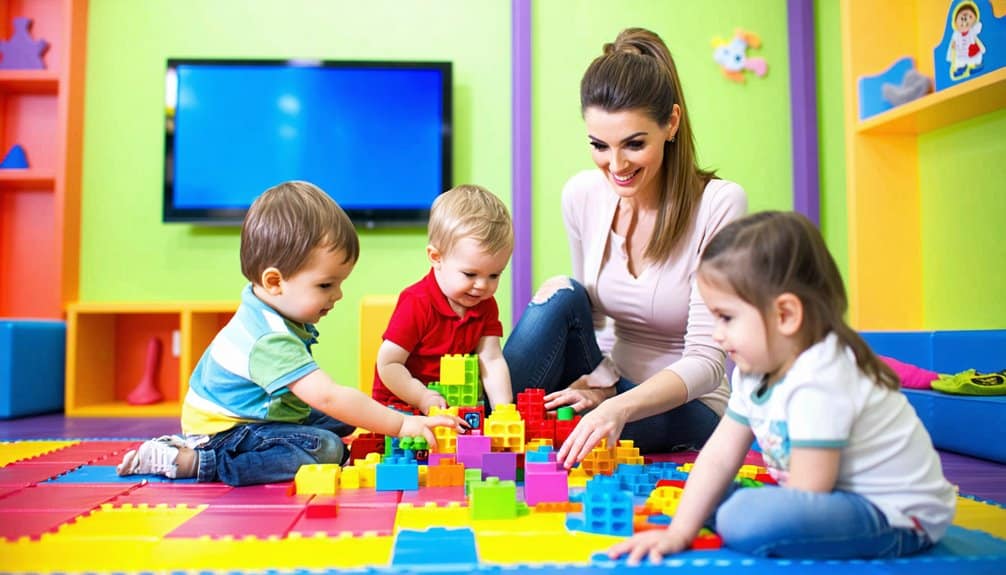Recognizing that every child is wonderfully unique is one of the joys of parenting. Yet, sometimes, you may wonder if your child perceives and interacts with the world a little differently. Neurodivergence is a term that describes natural variations in the human brain, including conditions like autism, ADHD, dyslexia, and more. Understanding if your child may be neurodivergent helps you embrace their strengths and provide the best support for their growth.
Let’s explore the primary signs that may indicate your child is neurodivergent, offer practical examples, and provide guidance on what steps to take next.
What Does It Mean to Be Neurodivergent?
Neurodivergence refers to differences in the way brains process information, behave, and perceive the world. This umbrella term includes a wide range of differences such as:
- Autism Spectrum Disorder (ASD)
- Attention Deficit Hyperactivity Disorder (ADHD)
- Dyslexia and other learning differences
- Dyspraxia
- Tourette’s Syndrome
Rather than viewing these conditions as deficits, the neurodiversity movement celebrates them as natural variations—each bringing value and unique perspectives.
Why Early Recognition Matters
Spotting early signs of neurodivergence can empower parents and caregivers to seek early interventions, access helpful resources, and foster self-esteem in children. Early awareness often leads to better academic, emotional, and social outcomes.
Key Signs Your Child May Be Neurodivergent
Let’s dive into the most common signs, noting that every child’s journey is unique. It’s essential to remember that simply displaying one or two of these traits doesn’t mean your child is neurodivergent. Consistent patterns across different settings merit further attention.
1. Differences in Communication
Children who are neurodivergent may communicate in distinct ways:
- Delayed speech or language milestones
- Repetitive phrases or scripts (sometimes called echolalia)
- Difficulty understanding nonverbal cues like facial expressions
- Avoiding eye contact, or using less eye contact than peers
- Expressing needs through behaviors rather than words
If your child is highly articulate about complex subjects but struggles with basic conversations, or is slow to speak but communicates through gestures, these could be indicators.
2. Unusual Sensory Sensitivities
Neurodivergent children often experience the world through heightened or decreased senses. Signs include:
- Covering ears in response to everyday sounds
- Strong discomfort with certain clothes or food textures
- Fascination with spinning objects, lights, or patterns
- Intense reactions to smells or tastes
You may notice your child refuses to wear socks, gags at particular foods, or becomes overwhelmed in loud environments.
3. Intense Interests or Focus
While every child has favorite activities, neurodivergent children may develop:
- Deep, specific interests that dominate their play and conversation
- Desire to learn everything about a topic (e.g., trains, space, animals)
- Difficulty shifting attention away from preferred activities
Such focus can lead children to become experts in their area of interest, sometimes teaching adults new things!
4. Challenges With Social Interactions
Social differences might present as:
- Preferring solitary play or adult company over peers
- Difficulty understanding social rules (“give and take,” personal space)
- Trouble making or keeping friends
- Seeming “in their own world” during group activities
Some children may seem shy, but others might interact in ways that seem unconventional to their age group.
5. Repetitive Behaviors or Routines
A need for routine is common, but some children display:
- Repetitive movements like hand-flapping, rocking, or spinning (often called “stimming”)
- Insistence on sameness in daily routines
- Becoming upset by minor changes (e.g., route to school, meal order)
These behaviors can help children manage feelings and create a sense of control.
6. Emotional Regulation and Intensity
Neurodivergent children may:
- Experience intense emotions—frequent meltdowns or emotional outbursts
- Have difficulty identifying or expressing feelings
- Display sudden mood shifts or heightened anxiety
Understanding and regulating emotions can be overwhelming, especially in busy, unpredictable environments.
7. Unique Learning Styles and Academic Patterns
In the classroom, signs may include:
- Exceptional skills in some subjects, paired with struggles in others
- Trouble following complex instructions, but excelling with hands-on tasks
- Unusual ways of solving problems or approaching schoolwork
Teachers may note your child is bright but “marches to a different drum.”
8. Attention Differences
Children with ADHD and other attention-related differences might show:
- Difficulty sitting still, staying focused, or following conversations
- Being easily distracted by noises or objects
- Tendency to act impulsively or “on a whim”
These behaviors are sometimes mistaken for laziness or stubbornness, but reflect genuine brain differences.
9. Physical Coordination or Motor Skills
You might see signs such as:
- Trouble with handwriting, using scissors, or catching a ball
- Clumsiness or awkward movements
- Preference for activities not requiring fine motor skills
Occupational therapy can often help children build these skills with encouragement and practice.
10. Differences in Sleep, Eating, or Daily Patterns
Look for:
- Unusual sleep schedules—difficulty falling or staying asleep
- Picky eating, strong food preferences, or food-seeking behaviors
- Unusual bathroom habits or challenges with toilet training
These patterns often connect to sensory processing or internal rhythms.
When Should Parents Be Concerned?
Concerns generally arise when several of these patterns persist across home, school, and social settings. Trust your instincts. If you notice ongoing challenges, consider talking with:
- Your child’s pediatrician or family doctor
- Teachers or school counselors who interact with your child regularly
- Child psychologists or behavioral specialists
Early evaluation can uncover strengths, needs, and tailor support for your child’s specific profile.
How to Support a Neurodivergent Child
Here are practical steps you can take to create a nurturing environment:
- Listen to your child; every experience is valid and important.
- Observe patterns—keep a journal or notes for discussions with professionals.
- Celebrate your child’s interests and strengths.
- Be patient during meltdowns or challenging moments.
- Connect with other parents or support groups for ideas and encouragement.
- Seek professional guidance for developmental screenings or therapies if needed.
Remember, a supportive home can be a child’s best resource on their journey.
Embracing Neurodiversity: Changing Perspectives
Today, more families and educators recognize that neurodiversity adds richness to our communities. Many successful artists, inventors, scientists, and leaders have been neurodivergent. Helping your child discover and use their strengths can boost confidence and pave the way for a fulfilling life.
Frequently Asked Questions
Is being neurodivergent a disability?
Not always. Some neurodivergent conditions meet the definition of disability if they impact daily functioning, but many people thrive with the right support.
Is there a test for neurodivergence?
There are evaluations for specific conditions like autism and ADHD, typically involving behavioral observation and developmental history.
Can neurodivergent children succeed in school?
Absolutely! With understanding teachers, personalized learning, and family support, neurodivergent kids often excel.
Conclusion: Early Insight, Lifelong Empowerment
Recognizing the signs your child may be neurodivergent isn’t about labels—it’s about understanding who they are and what they need to succeed. By noticing early signposts, seeking guidance, and championing their strengths, you can help your child blossom.
You’re not alone on this journey. Start by listening, learning, and loving your child as they are.
Ready to support your child’s unique mind? Share this article with other parents, start a conversation, and take the first step toward an empowered, informed future!






